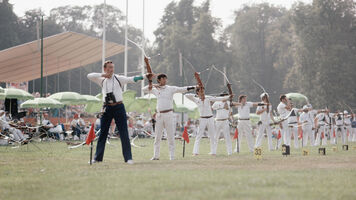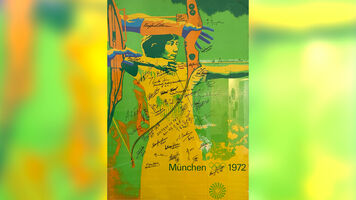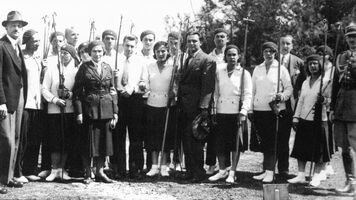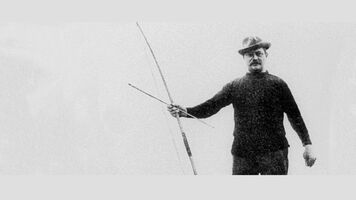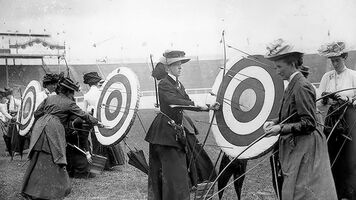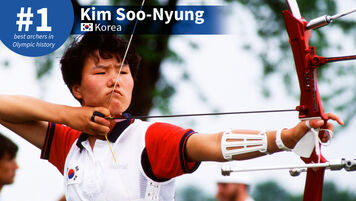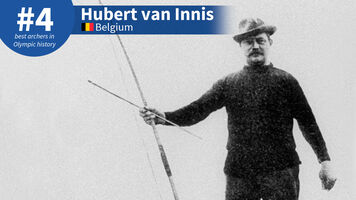Archery history: Arrows of the imagination, art and cultural symbolism
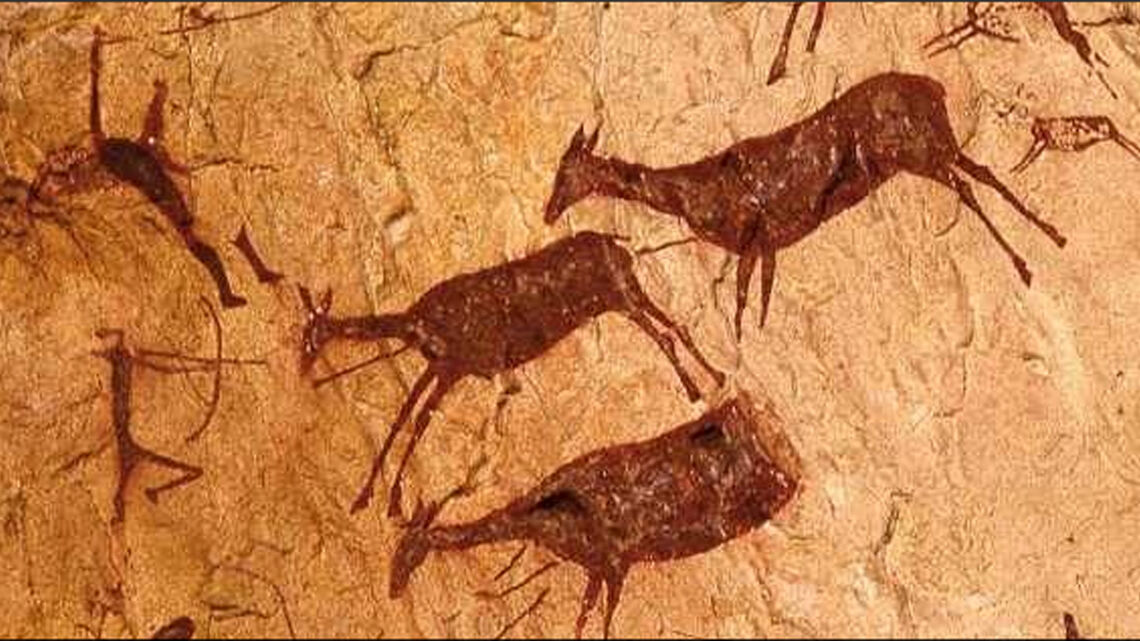
Etched on a wall of the Cova dels Cavalls rock art site in eastern Spain there is a prehistoric image of archers hunting deer. The simple stick figures, clearly in motion, give us a sense of the scene and we can even understand the direction of the arrows from just a few marks on the wall.
Even though it was drawn potentially 7000 years ago, we understand the metaphor of the drawn bow while other, more abstract, images made in the same period are more difficult to decipher.
The images in this cave are some of the first depictions of humans in art. In Villafranca, also in eastern Spain, an ancient painting depicts an archer with a drawn bow holding a sheaf of arrows in his bow hand, a sight familiar to modern traditional archers.
Many have speculated why these images were drawn, given that cave paintings usually represent animals. A common explanation is that they represented a form of ritual magic – and that visualising a successful hunt would make a real on more likely to happen.
(Intriguingly aligning with the competition visualisation techniques elite archers use to prepare for events.)
This would make bows and arrows some of the earliest symbols that represent ideas larger than themselves. And arrows in art are timeless. The cave paintings of Iberia might have been the first – but not the last time – that the arrow would become a metaphorical tool. A crucial element of the stories humans tell themselves.
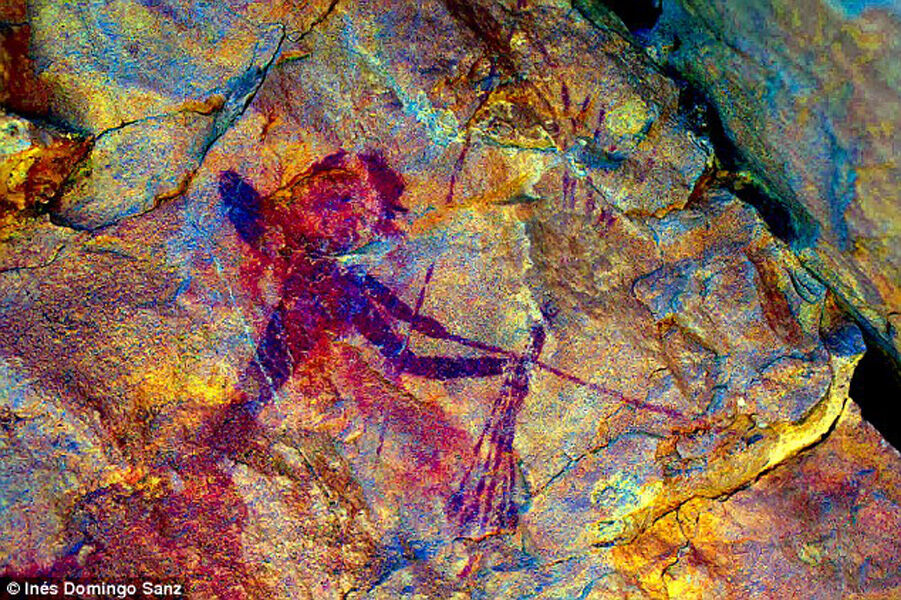
SYMBOL
Early in history, the arrow developed an effective and quite separate symbolic existence from the bow. As one of the first pieces of technology – and one of the simplest to understand – it was an essential part of communication.
An arrow as depicted in two dimensions has a pointy end and a fletched end, which implies movement. As a directional marker, it has been around for millennia.
In the modern urban world, they are an essential part of the landscape on signposts for roads and paths. Every day, millions of people find their way around the world without stopping to think that they are guided by an arrow.
On your keyboard at work, your microwave or any other situation that you need to convey the concepts of up, down, left, right, forward or back – there is no better way than with an arrow.
Early Native American cultures, reliant as they were on archery, even developed an extended symbolism for the arrow as part of a variety of non-verbal communication methods needed on a continent with hundreds of spoken languages.
Two horizontal arrows in different directions might mean war, whereas a broken arrow meant peace. Crossed arrows were said to mean friendship.

REligion
All of the Abrahamic religions – Judaism, Christianity and Islam – mention archery both real and metaphorical.
Arrows are mentioned almost 60 times in the Bible (and quivers seven times), often as metaphors. One of the best-known passages includes Samuel 20:20, where Jonathan used an arrow, purposefully sent off-target, to send a message to David, in hiding.
In Jewish symbolism, King Jehoash, commanded by the prophet Elisha, shot arrows from an open window into the air to symbolise the destruction of his enemies. On Lag Baomer, the mid-year Jewish festival, children are sent to play with bows and arrows, with the bow symbolising a rainbow and the arrow symbolising the ‘power of inwardness’, a mystical part of qabbalistic tradition.
Archery is present in many Islamic texts as well, with the prophet Muhammed recommending archery for its benefits and praising archers several times (you can see one of the six bows ascribed to him in the Topkapi Palace in Istanbul).
Travellers will find metaphorical ‘qibla’ arrows on the ceiling of most hotel rooms across the Middle East and Asia, directing anyone needing to pray toward Mecca.
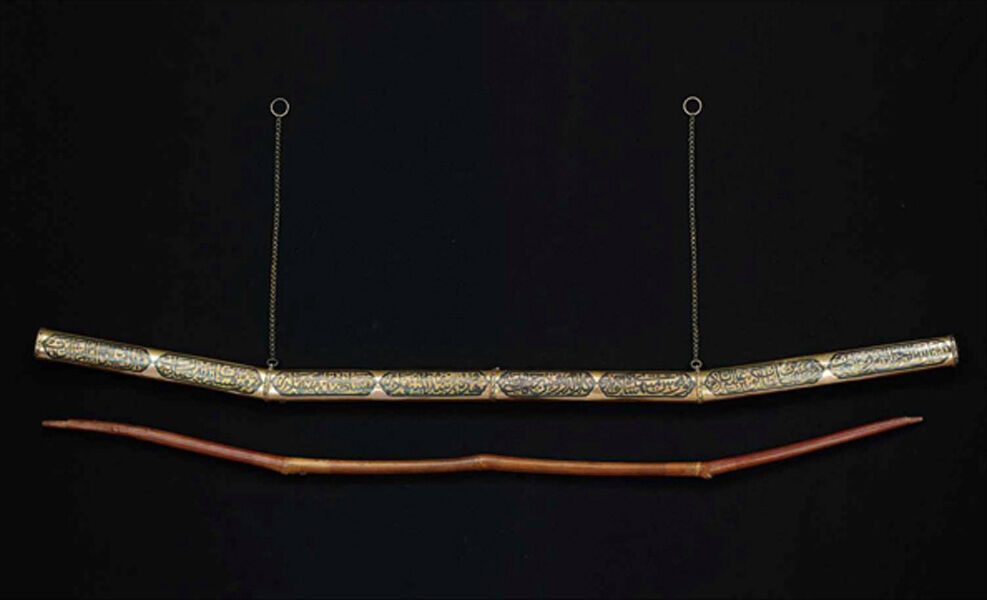
Prophecy
In the Quran, arrows are mentioned with a warning about using them for divination. Belomancy, or telling the future through drawing arrows from a quiver, was an ancient practice used by the Babylonians, Greeks and Scythians, among others.
One method used three arrows – one blank, one marked with the words ‘God orders it me’, and one with ‘God forbids it me’. These arrows would be shuffled in the quiver, and the first to be drawn would reveal the answer.
Belomancy was common in Asia, too. In the Tibetan region, a slightly different method was used, called Ge Sar mda’mo, after the semi-mythical King Gesar. It involved placing numbered arrows in a vessel and shaking them about until one fell out. The number would then correspond to an entry in a book of divination.
Today, in north-east India, a different type of divination still goes on; a centuries-old gambling game called ‘teer’ which involves betting on how many arrows, shot by professional archers, hit a rotating barrel-shaped target.

Power and status
Arrows are spread liberally across Hinduism, especially the epic Ramayana, and the archer and god-figure Rama. The ‘Arrow of Brahma’ was a superweapon which defeated the demon-king Ravana. This arrow was said to have feathers of winds and points of sun and flames. The Indian epics are metaphorical in nature, and from Rama we get the phrase ‘One Arrow, One Word’, implying the goal of integrity and infallibility.
Across Asia, where the mounted archer first attained mythical symbolic power, the arrow became an object of significance and ritual, a source of power.
A Khasi Indian naming ceremony for male children called Ka Jer Ka Thoh involves placing a bow and three arrows before the baby; the first arrow signifying the land, the second his clan and the third himself. Traditionally, upon death, the same bow (carefully preserved) is placed by the body, while the arrows are shot into the sky to accompany his soul to the heavens.
Nearby, Tibetan Buddhism holds sway across a large region of India, Nepal and Bhutan. Decorated arrows called dha are part of shamanistic culture. As a Buddhist symbol, the arrow is found throughout the art, mythology and theology of the region; held by gods and lauded in sacred texts.
Mongolian shamans will sew arrows into their clothing; the rattling together is supposed to frighten demons. In eastern Mongolia, arrows are part of wedding rituals; the father of the bride will present an arrow to the groom before leaving again with his bride – and tradition also dictates he should be wearing a quiver.
The father then delivers an ‘ode to the arrow’, detailing its qualities as hopefully to be expressed by its new owner. Essentially, the arrow becomes a symbolic confirmation of the status of the groom as head of the household, and the authorisation to act in its defence.

Science
The durability of the arrow metaphor, as with archery in general, looks unlikely to go anywhere soon. The symbol is so simple and universal – and can be applied across all areas of human existence.
It even finds its way into modern science. The concept of an arrow of time, coined by the British astrophysicist Arthur Eddington, was developed further by Stephen Hawking in the hugely popular book, A Brief History Of Time.
It refers to time having a one-way direction, at least as we understand it on a human scale; although at microscopic levels, this may not be true – and time could perhaps even reverse.
The arrow of time means that things will always tend to entropy and disorder, rather than arrange themselves neatly. It’s also used to describe language like ‘yesterday’ and ’today’ and that language’s influence on our perception. It proves that nothing is as effective as a good metaphor for communicating an idea. Whatever technology is developed, arrows will always be part of our imagination.

